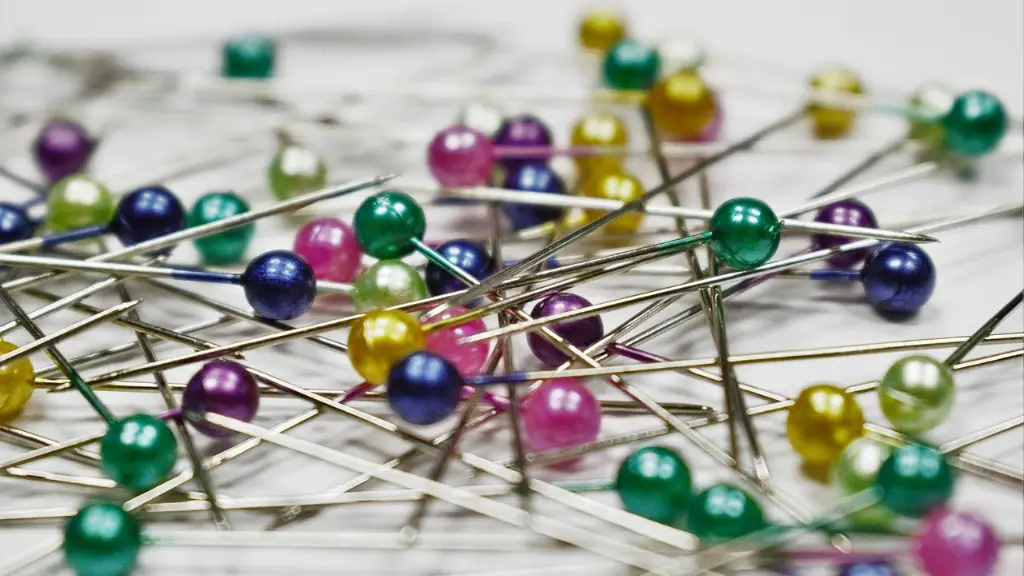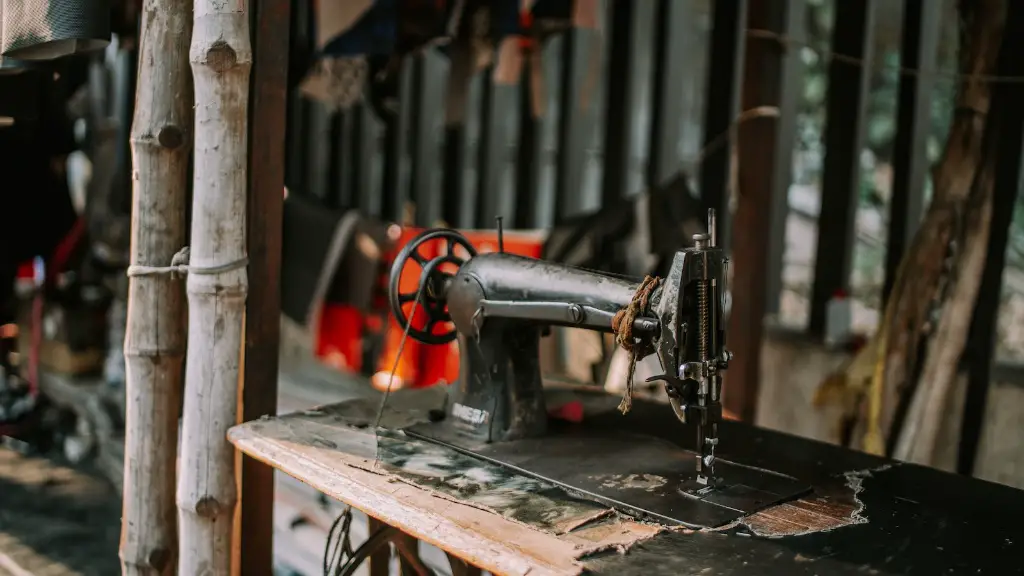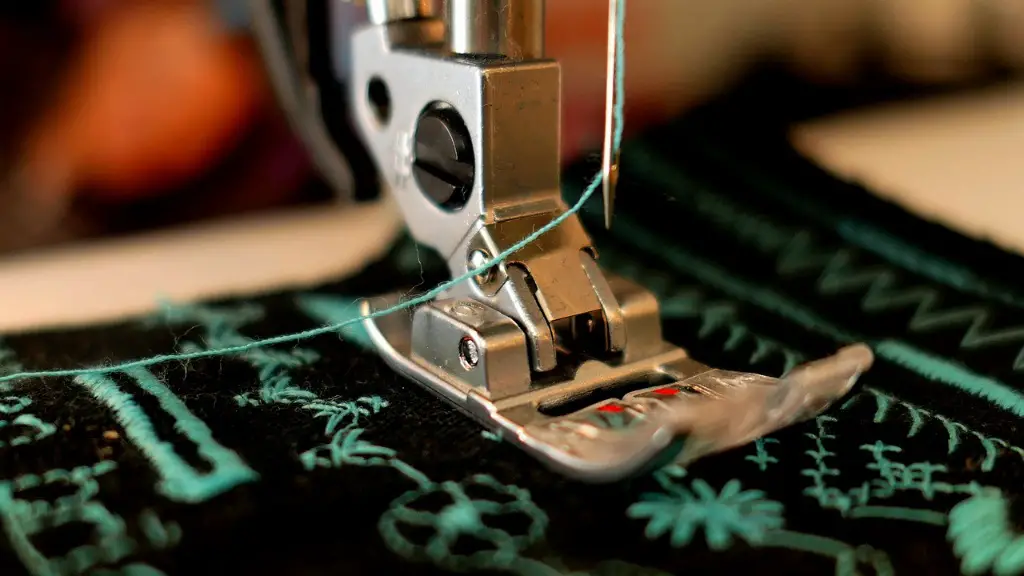Fabric pressing is a key step in successful sewing. It is important to use the correct tools and techniques to press fabric correctly. This guide will show you how to press fabric for sewing so that your projects turn out looking professional.
There are a few different ways that you can press fabric for sewing. You can use an iron, a steamer, or a press. If you are using an iron, you will want to set the temperature to the correct setting for the fabric you are pressing. You will also want to use a press cloth to protect the fabric from the iron. If you are using a steamer, you will want to hold the steamer about 6 inches away from the fabric and move it back and forth until the fabric is pressed. If you are using a press, you will want to lower the press onto the fabric and then apply pressure until the fabric is pressed.
Do you need to press fabric before sewing?
Pressing your fabric before you start sewing is important because you want the fabric to be as flat and smooth as possible when working on your project. If your fabric is crinkled or wrinkled before you start sewing, it will probably stay that way no matter how many times you dry it or iron it.
It is important to iron your fabric before you cut it so that the cuts are more accurate. It is also easier to iron your fabric if you dry it in the dryer and remove it immediately after it has dried. Don’t let it sit in there for days, which will make the creases much more difficult to remove.
What is the general rule in pressing fabric
When pressing a garment, always place the piece you plan to press toward on top, with the seam away from you. This will ensure that you are always pressing away from your body. First, press with a hot iron (set to the hottest setting with no steam), in brief (½ second) presses, in a press-lift-press-lift motion, along the seam.
You should always press your fabric before you cut it. This is because a small piece of fabric is easy to deform by being a little too rough with the iron. You don’t have to iron the whole piece of fabric, just a piece large enough to cut your pattern pieces out of. Drape the rest out of the way on your work surface.
What can I use if I don’t have a pressing cloth?
If you’re looking for a good press cloth, you have a few different options. You can use a clean white cotton tea towel, napkin, or fine linen handkerchief. Some people swear by a plain cotton diaper. If you make your own press cloth, be sure to use color-dyed or patterned fabric. You can also buy press cloths at most fabric stores.
Pressing and ironing are two terms that are often used interchangeably, but they actually refer to two different things. Ironing is the process of removing wrinkles from fabric by sliding a hot iron back and forth over it. Pressing, on the other hand, is the process of lifting and putting the iron down on a specific part of a project.
What fabrics should not be ironed?
Acetate, acrylic, nylon and beaded fabrics are all delicate materials that can be easily damaged by heat. When ironing these types of fabrics, it is best to use the lowest setting possible, and to iron the “wrong” side of the fabric. You may also want to protect the fabric by placing a cotton cloth between the garment and the iron.
If you need to remove wrinkles from a garment, you can put it in the dryer with a damp towel. The steam will release the wrinkles. You can also use a washcloth, especially if you only need to remove wrinkles from one small item. Put the dryer on a high setting for 5 to 10 minutes.
Should you press seams before or after sewing
Pressing is vital to the look of a garment. By using a press instead of an iron, you can avoid distorting the fabric. Each seam or construction detail should be pressed before it is joined to another garment section. This will help the garment hang correctly and maintain its shape.
Test the iron on a scrap of fabric first to find the right heat level. It can be so easy to burn or even melt your fabric. Use a press cloth. Be gentle. Press every seam after sewing. Use tools to help press the tricky stuff.
What is the number one rule of pressing?
Pressing fabric is different than ironing a shirt. You need to be careful not to press too hard or you could ruin the fabric. Always set your seams before pressing them to get the best results.
Ironing means placing an iron on the entire area for a few seconds before lifting and moving to the next area.
What are the 3 steps of pressing
This easy, three-step pressing technique will improve your sewing skills:
1. Press the seam flat along the stitching line to blend the stitches.
2. Press the seam allowances open or to one side, as indicated in the pattern instructions.
3. Press the seam or detail area from the right side.
The basic tools for ironing are an iron, ironing board, and press cloth. A steam iron is convenient, but a dry iron used with a press cloth and moisture sometimes gives a more satisfactory press. The ironing board should be adjustable to your height, smooth, and well padded.
What is the proper technique for pressing seams?
There are many different types of pressing, and the next one is to press open. To do this, take your fingers and simply guide them along the seam. This is a great way to get a nice, crisp look without having to put in too much effort.
Parchment paper works just as well as a Teflon pressing sheet and it cools off faster. This makes it a great choice for quilters who do fusible applique.
Final Words
Iron the fabric before cutting it to avoid stretching the fabric out of shape. Then, use a press cloth—a piece of clean, lint-free muslin—between the iron and the fabric to protect it from direct contact with the iron.
Pressing fabric is an important step in the sewing process. By taking the time to press your fabric, you will create a professional looking finish to your sew projects. Follow the steps below and you will be sure to have nicely pressed fabric for your next sewing project.





